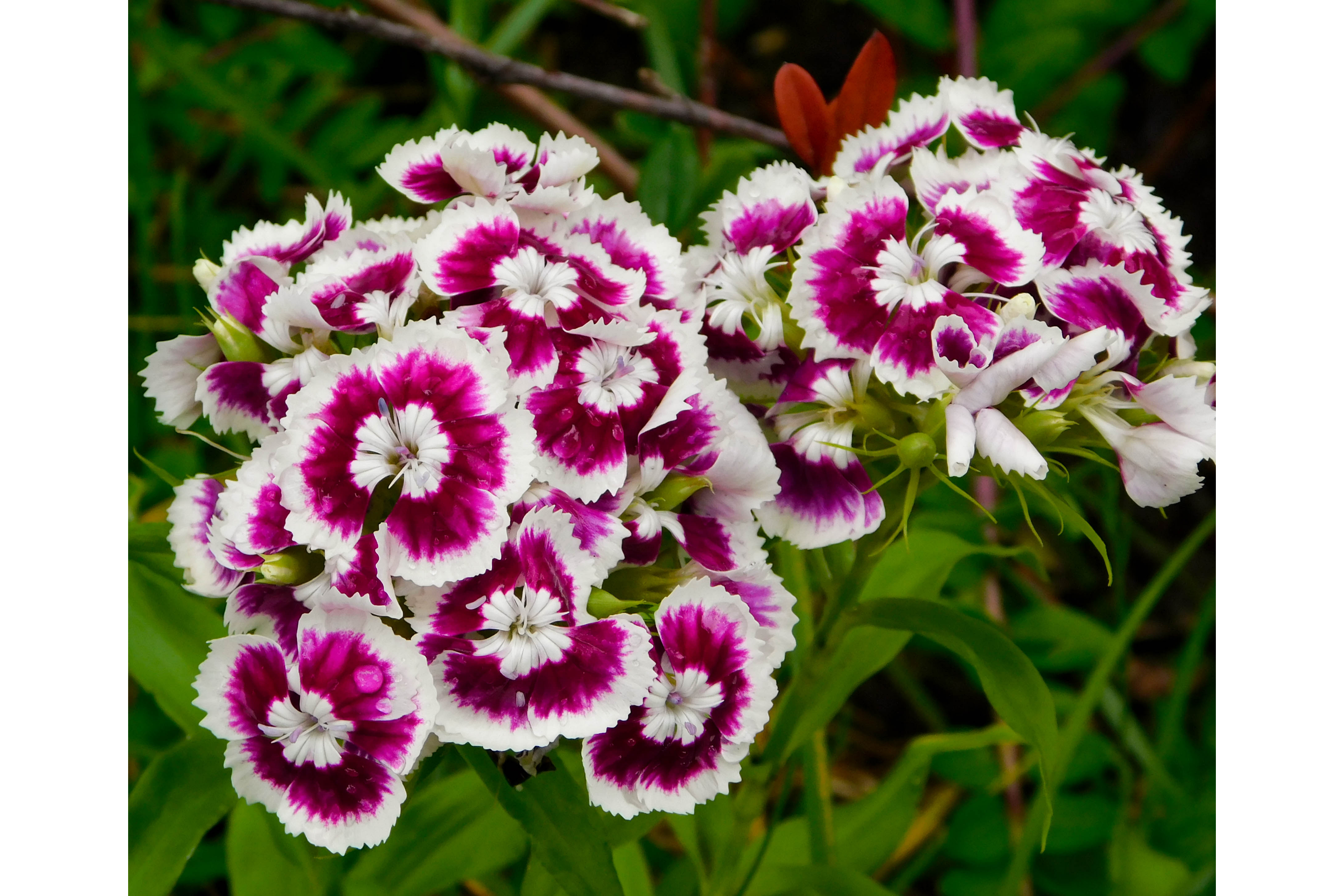Sweet William
(Dianthus barbatus)

Description
Dianthus barbatus is a popular species of flowering plants that belong to the Caryophyllaceae family. The plant is commonly known as Sweet William, and it is native to Europe, but it has since spread to other parts of the world, including North America. The plant is a popular choice for gardeners and horticulturists because of its beautiful flowers and its adaptability to various growing conditions. Description Dianthus barbatus is a biennial or short-lived perennial plant that grows up to 60 cm tall. The plant has an erect, branching stem that is covered with fine hairs. The leaves are lanceolate or linear, and they are about 5 cm long. The leaves are arranged in opposite pairs on the stem and are also covered with fine hairs. The flowers of Dianthus barbatus are arranged in compact clusters at the top of the stem. Each flower is about 2 cm wide and has five petals that are deeply divided into narrow lobes. The petals are typically red, pink, or white, and they have a sweet fragrance that gives the plant its common name of Sweet William. Habitat and Distribution Dianthus barbatus is native to Europe, but it has since been introduced to other parts of the world, including North America, Australia, and New Zealand. The plant is commonly grown in gardens, parks, and along roadsides. It prefers well-drained soils and full sunlight, but it can also grow in partial shade. Cultivation Dianthus barbatus is a relatively easy plant to grow, and it is a popular choice for gardeners and horticulturists. The plant can be propagated by seeds, which are sown directly into the soil in the spring or fall. The soil should be well-drained and fertile, and the seeds should be sown at a depth of about 3 mm. Once the plants have germinated, they should be thinned to a distance of about 15 cm apart. The plants should be watered regularly, but they should not be over-watered, as this can cause the roots to rot. The plants should be fertilized with a balanced fertilizer once a month during the growing season. Pests and Diseases Dianthus barbatus is relatively resistant to pests and diseases, but it can be susceptible to root rot if the soil is too wet. The plant can also be affected by aphids, which can be controlled by spraying the plants with insecticidal soap or by introducing natural predators, such as ladybugs or lacewings. Uses Dianthus barbatus is mainly grown for its beautiful flowers, which are used in cut flower arrangements and for ornamental purposes. The plant is also used as a ground cover and as a border plant in gardens and parks. The flowers of the plant are edible and can be used to add color and flavor to salads and other dishes. Conclusion Dianthus barbatus is a popular species of flowering plants that are native to Europe but have since spread to other parts of the world. The plant is a popular choice for gardeners and horticulturists because of its beautiful flowers and its adaptability to various growing conditions. The plant is relatively easy to grow and is resistant to pests and diseases. It is mainly grown for its ornamental value, but its flowers are also edible and can be used in various culinary applications.
Taxonomic tree:







